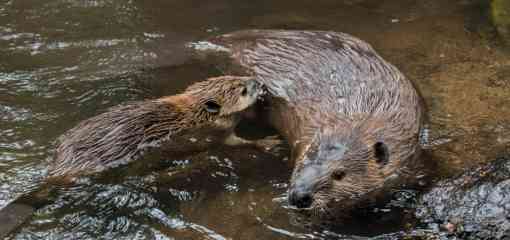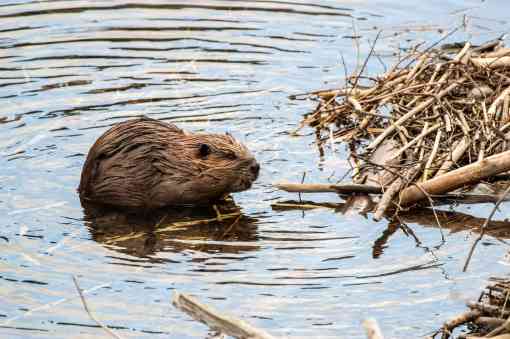By building dams and lodges, beavers are considered ecosystem engineers. Their dams raise water levels, slow water speed and change water direction, which can increase wetland size, enhance wildlife and plant diversity, improve water quality and maintain stable water temperatures. Beaver ponds provide habitat for freshwater fish, migratory birds, amphibians and other wetland species.
Importantly for the hot, dry Southwest, beavers can play a significant role in addressing climate change and the biodiversity crisis. But beavers can also sometimes cause trouble for irrigators and property owners. However, there are solutions that allow humans to coexist with this furry engineer.
In northern New Mexico, traditional farmers of Spanish, Mexican and Native American heritage have been living in a standoff with beavers for at least 400 years. Community acequias, historically engineered canals that carry snow runoff or river water to distant fields, are the oldest water management institutions of European origin in the United States. These irrigated agronomies date to the time of the first settlement by Spaniards during the late 16th century and some even to earlier Native American communities. Irrigators communally govern acequias, with local precedents and traditions, sharing water equitably during times of scarcity.
In 2021, Defenders of Wildlife initiated a cost-share program to help pay for costs associated with beaver coexistence in northern New Mexico. The goal of the program is to encourage peaceful coexistence with beavers by assisting communities with design and funding projects that reduce negative impacts from beavers.
Santa Fe County, which manages Los Potreros Open Space in the traditional, Hispanic farming community of Chimayo, approached us after beavers recently moved onto the property. As a community that relies on water for survival, the farmers are concerned with beaver activity that blocks their ditches and brings down valued trees. They are also worried that beaver ponds may flood access roads and neighboring yards if not properly mitigated.
Working with the county and the local nonprofit organization Rio Grande Return, Defenders is listening to the farmers’ needs and designing a system of pond flow devices and barriers that will allow the community to maintain its centuries-old system of sustainable agriculture, while allowing for beaver presence and biodiversity restoration. The design will allow some water to flow through the beaver colony while slowing it down and storing it for the dry summer months. Barriers will prevent the beavers from blocking ditch headgates, ensuring water flows as designed. We hope this collaboration improves the relationship between the community and beavers in areas surrounding the county property.
Coexisting with wildlife is integral to Defenders’ mission to protect all native wild animals and plants in their natural communities. Working on the ground, with people in communities who share land, water and air with wildlife, is one of the most effective ways to get positive results for humans and wildlife. We are hopeful that our partnership with Santa Fe County, Rio Grande Return and the traditional farming communities of New Mexico will spawn a healthy and happy relationship for the next 400 years.
"traditional" - Google News
April 07, 2022 at 03:51AM
https://ift.tt/PskvRdH
Traditional Farming Communities Coexist with Beavers - Defenders of Wildlife
"traditional" - Google News
https://ift.tt/YPGXio1
Shoes Man Tutorial
Pos News Update
Meme Update
Korean Entertainment News
Japan News Update
Bagikan Berita Ini
















0 Response to "Traditional Farming Communities Coexist with Beavers - Defenders of Wildlife"
Post a Comment